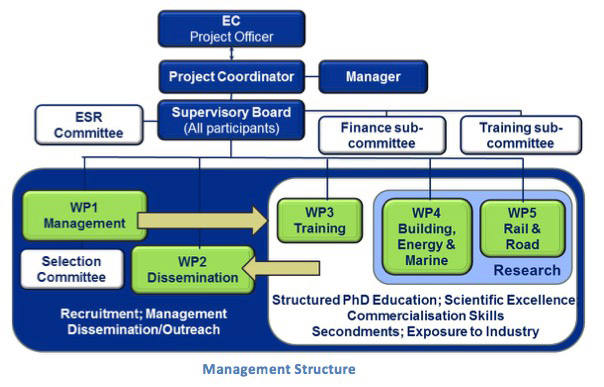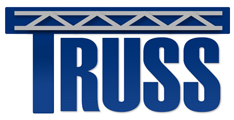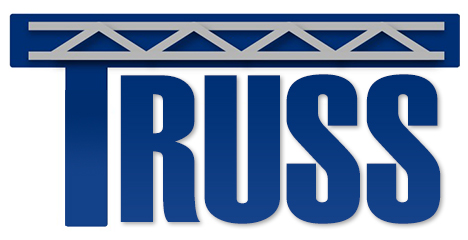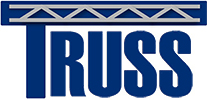
The Supervisory Board comprises one representative of all beneficiaries and partner organizations and an ESR representative for the purpose of high-level decision-making and is the ultimate decision body in the project. There are finance and training sub-committees of the Supervisory Board to provide oversight and ensure compliance on all matters financial and training activities respectively. There is also a Committee for ESRs to raise any concerns to the Supervisory Board they may have in relation to their programme of study or to facilities in their particular hosts/secondments. The Supervisory Board is chaired by the Project Coordinator who also acts as the intermediary between the EC and the TRUSS network. The Coordinator is supported in project management activities by the Project Manager.
Through its program stimulating, cutting-edge research and training achieved via trans-national and trans-sectoral mobility, and inter- and multi-disciplinarity, TRUSS ITN clearly addresses both the spirit and substance of the European Charter for Researchers. The overall approach of TRUSS ITN is to integrate 14 Individual Research Projects (IRPs) into the overall Network collaboration which is encompassed by two thematic research clusters which respond to specific infrastructural needs. Within this framework, the TRUSS proposal involves partnerships at a variety of levels. At the most basic level, there will be a number of bilateral collaborations, centred around IRPs. Each ESR is assigned a project with a Doctoral Studies Panel (DSP) composed by experts from at least 2 European countries, including both academic and industrial participation, and male and female presence. Structural safety is a broad area of investigation and while training modules imparted in TRUSS ITN provide researchers with an overall understanding and advanced skills, IRPs respond to specific needs for a particular infrastructure type. Therefore, the IRPs are grouped into two research clusters:
The methodologies employed during the research training programme in each cluster will be necessarily multi- and inter-disciplinary, leveraging the expertise of each of the consortium members.
TRUSS ITN is structured in five Work Packages (WPs). The WP leaders review technical progress with the WP members periodically, and report to the Supervisory Board about all technical and organisational issues.



